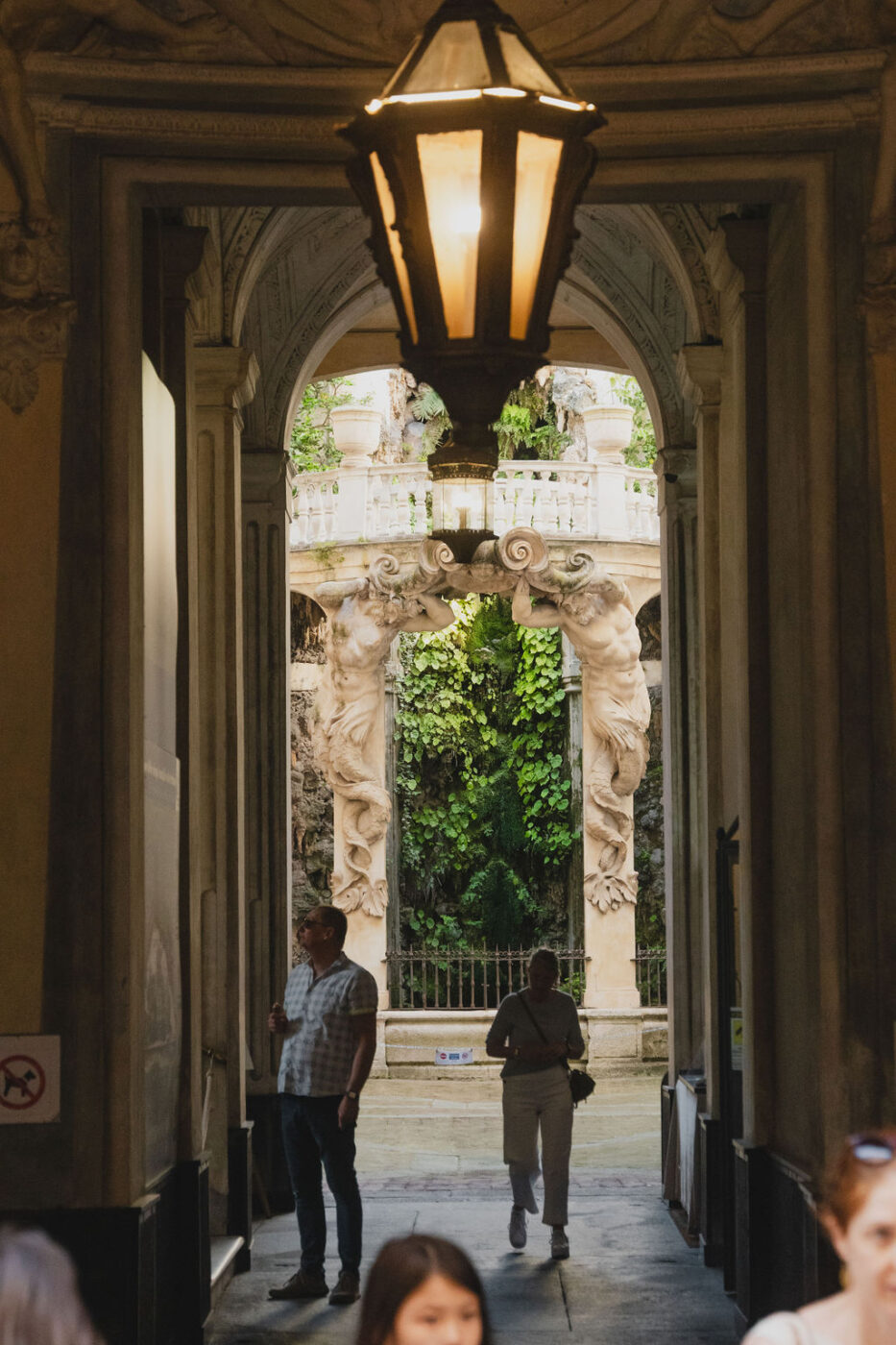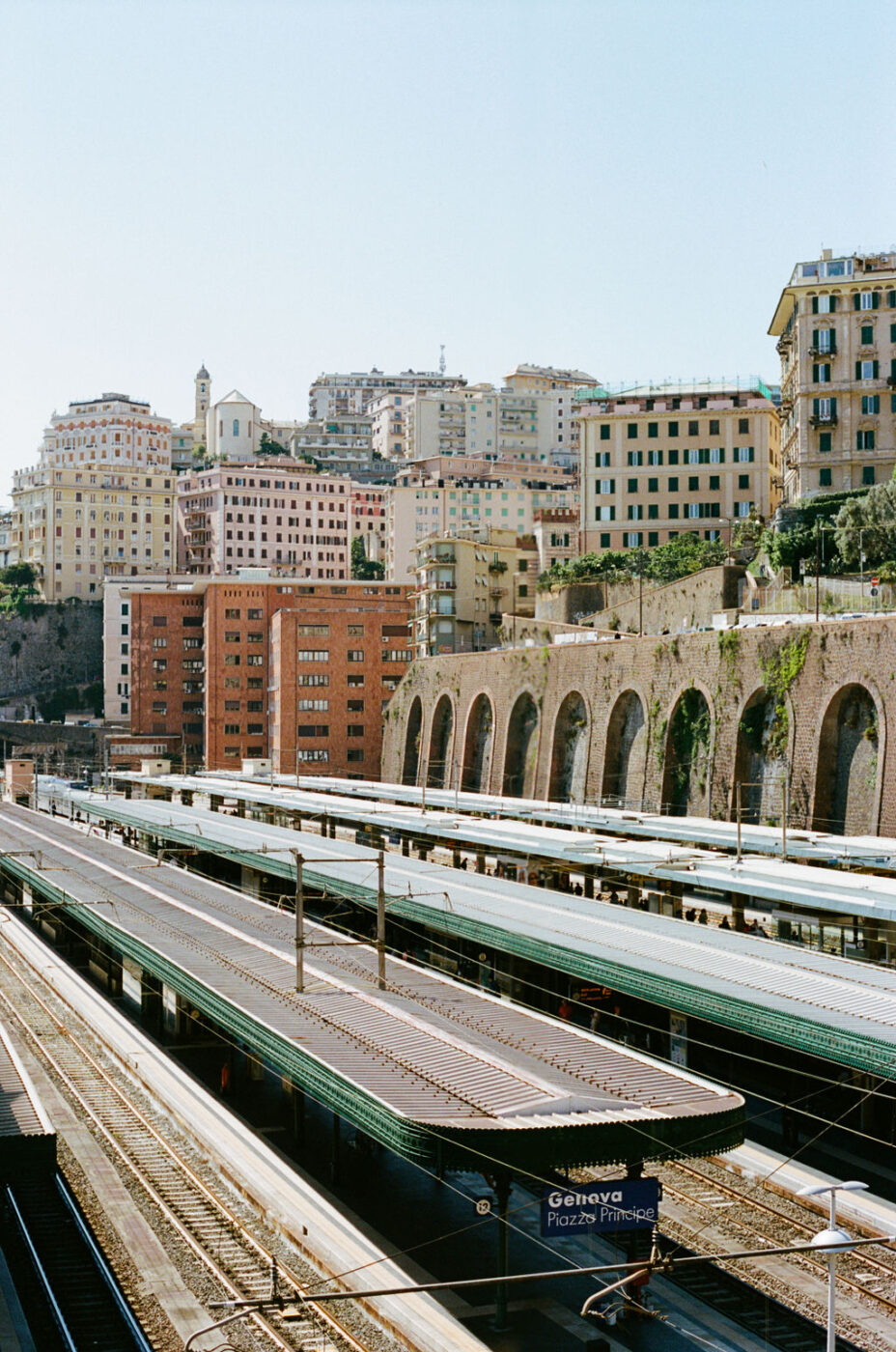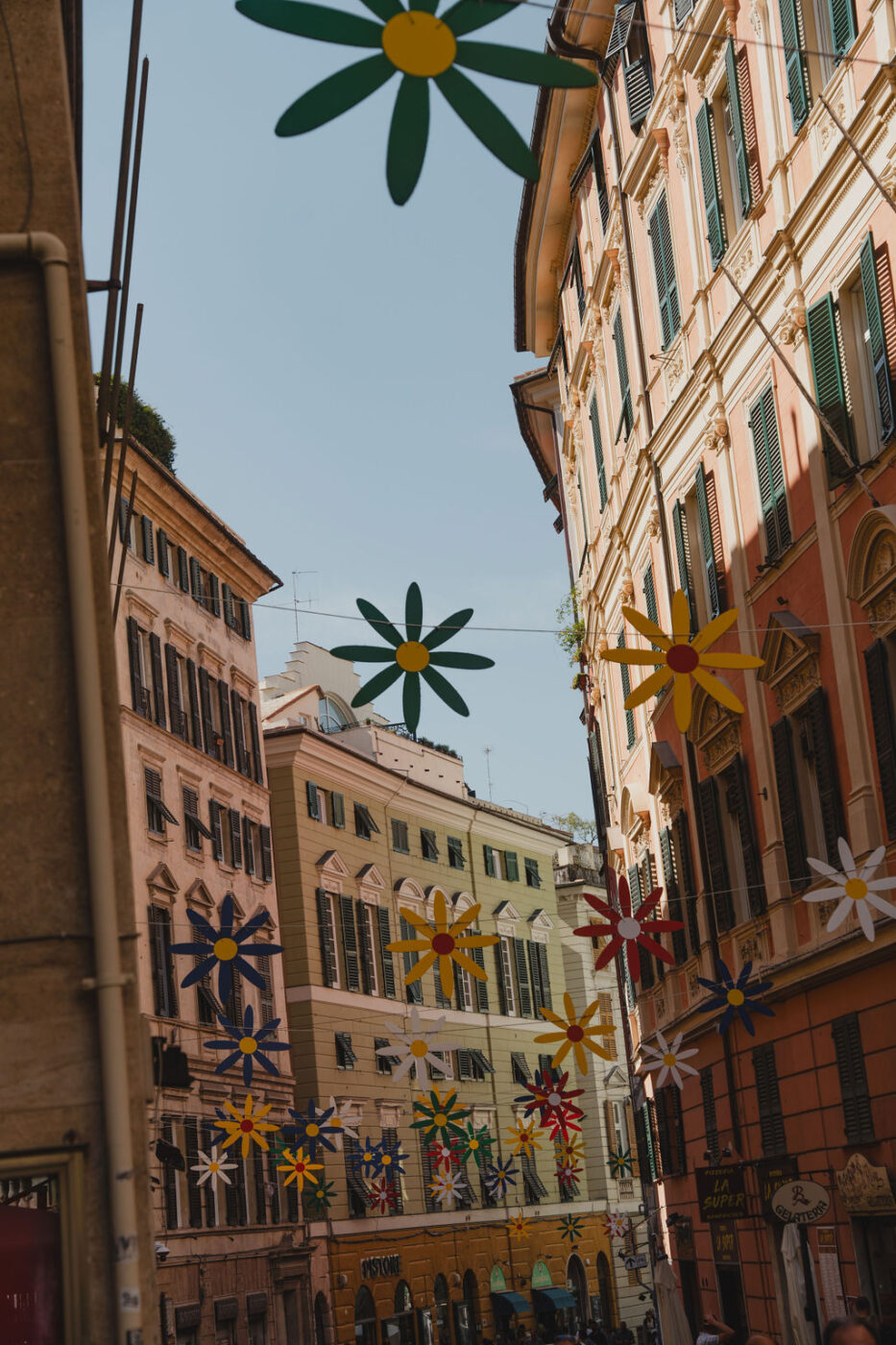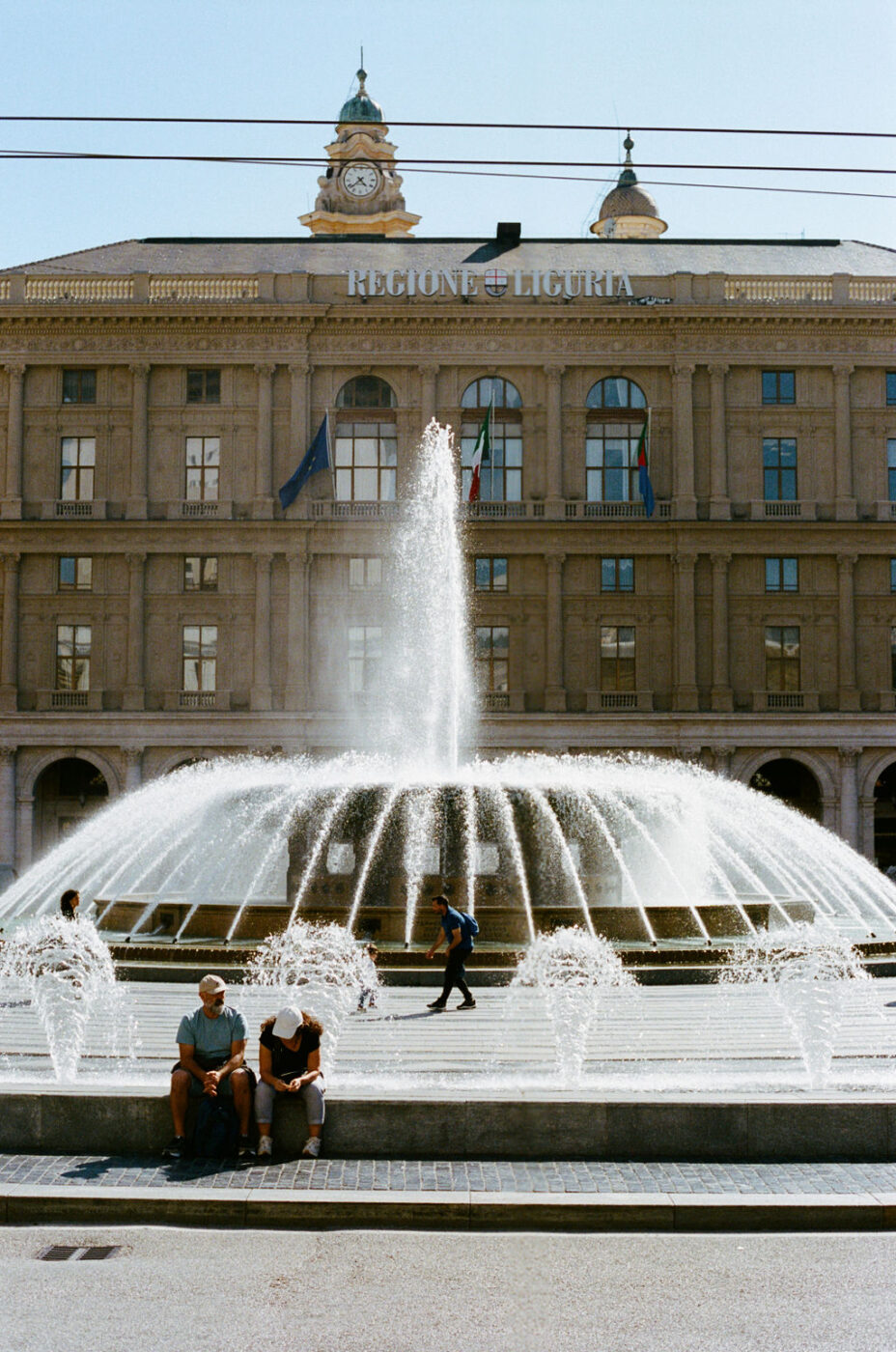No Italian town is quite like the other, and this is because Italy’s history is recent, while that of its municipalities, kingdoms, and republics has lasted for centuries. But the cultural biodiversity of the “Land of a Thousand Bell Towers” includes one that is even more diverse than the others: Genova, nicknamed La Superba (The Superb), a city independent by definition.
Let’s not beat around the bush: the first impression of Genova when arriving from the highway is that of a tangle of overpasses and towering buildings wedged between elevated roadways. Genova is a disorderly city that grew adapting to gorges, promontories, and slopes, along a narrow coastal strip a couple of kilometers long. As the regional capital developed around a natural harbor, without lands or countryside behind it, it expanded elsewhere–i.e. overseas. Since the middle of the 11th century, Genova has been an autonomous city, a merchant power that has exercised uncontested dominance over the Ligurian coasts and a good part of the Mediterranean Sea, extending to the Middle East in the years of the Crusades and becoming one of the largest naval powers in Europe. First for trade and then to establish settlements, in the 13th century, Genovese colonies were found on the island of Cyprus, in Crete, Rhodes, Istanbul (the present-day Galata district), along the coasts of Turkey, and even on the Black Sea. Genova is still twinned with the Ukrainian city of Odessa, and it’s no coincidence that a certain notorious “explorer” came from here.
Genova: a city of merchants, bankers, and tightwads
With a historic center that winds through narrow alleyways called carruggi and 113 hectares of surface area, Genova has one of the largest medieval historic centers in Europe and with the highest population density. It’s a maze of streets darkened by towering buildings, alternating with small squares, churches, and sumptuous palaces that belonged to the aristocracy and the merchant bourgeoisie. The latter are Renaissance and Baroque residences built in the 16th century to represent the wealth of the city’s families; 42 can be visited (I recommend Palazzo Rosso, Palazzo Bianco, and Palazzo Spinola), among the over 100 still existing, some private and others turned into museums. You’ll hear them called the Palaces of the Rolli, for these families had the honor and duty of hosting the city registers, called “rolli”, as well as illustrious travelers–princes, ambassadors, prelates, etc.–passing through Genova. Decorated facades, frescoed ceilings, gold, and stucco give a good idea of the power of some Genovese families during the “Siglo de Oro” (“Golden Age”) of 1492 to 1600.

Photo by Gareth Paget
Genovese bankers financed the Spanish crown and the construction of the country’s Invincible Armada, receiving entire provinces of Sicily as collateral. Merchants controlled the port of Ripa Grande in Rome, and the Trastevere district was inhabited by Ligurian sailors; the Senate of the Italian Republic is housed in a palace built by Genovese families, as is Palazzo Marino, the seat of the Municipality of Milan. Their power reached Northern Europe, and in Bruges, there still exists the building of the “Genovese Lodge”; once the consular house and now the Frietmuseum dedicated to potatoes and Belgian fries.
The history of Genova is that of an open cosmopolitan city, a tradition that continued into modern times. With the opening of the Suez Canal in 1869, it was around the port of Genova that ships stopped and various foreign communities settled, including a representation of the English (who, from Ventimiglia to Portofino, have made the history of many Ligurian cities). In the 20th century, many Genovese emigrated to the American continent for business, founding both the barrio of La Boca in Buenos Aires, Argentina, and the port of Valparaiso in Chile, the largest in South America and a mandatory stop before the opening of the Panama Canal. The Genovese also built the railway that connects the two cities, and it was a Genovese who founded the Bank of America. With the birth of the Italian State in 1861, Genova formed one point of the industrial triangle along with Milan and Turin.
Genova’s past is dotted with wealth and splendor, and yet the city’s people are known throughout Italy for being introverted, inhospitable, and complaint-prone; parsimonious, some would venture stingy, with a “short arm” as a popular saying goes, so short that it can’t reach the wallet in their pockets. And even the cuisine is like this–local and poor, on one hand, but, on the other, based on ingredients that arrived here over the centuries, often to depart for other destinations.

Photo by Gareth Paget
The cuisine of the Genovese, not of Genova
The cuisine of the Genovese (2016) by local author Paolo Lingua tells the story “of the Genovese” and not “of Genova” precisely because the Genovese have developed a gastronomic economy linked to distant trades and markets. They themselves are the main ingredients of their cuisine, little due to the territory and much to their history.
“Everything the Genovese have put on the table over the centuries, with the exception of a few herbs and oil produced from the steep valleys between the houses on the outskirts of the city, comes from afar and carries with it the scent of other worlds: so it is with pasta, cod, confectionery, even pesto,” writes the author. The countryside offers scarce bounty, the climate is mild, they cook a bit with everything, and perhaps the most typical dishes are the ripieni, anything from ravioli to vegetables to meats filled with whatever’s on hand and whatever the season offers. Courtyard animals like rabbits and chickens are the proteins of choice; few fats are needed because there’s no biting cold to defeat. Meats are white, sauces pure, and tomato is used sparingly.
As historic wheat merchants, the Genovese eat pasta, not because they produced wheat but because they worked it to send elsewhere by ship. Rice, however, is also common, thanks to encounters with Arab and Turkish merchants since the Middle Ages. Cod comes from the northern seas, and fresh cheese from the area, especially the prescinsöa, a curd of whole milk, creamy and slightly acidic in taste, which is probably of Eastern European origin. Even the farinata, called fainâ here, has Middle Eastern origins and shares chickpea flour with Sicilian recipes like panelle: it’s eaten in the streets of the center in farinotti, ovens that prepare it on the spot in large copper trays and strictly on a wood-burning fire.
Sugar and spice and everything nice made Genova the gateway to Europe
Genovese pesto, a sauce famous all over the world thanks to trade routes, is instead a more recent phenomenon, appearing in culinary chronicles at the end of the 19th century but rooted in rich preparations of garlic, an ingredient used to preserve food throughout the Mediterranean basin. And then there are the spices, whose trade exploded from the 11th century onwards with the Crusades in the Holy Land. In Genova, in the heart of the alleyways of the historic center, you can find Vico dei Droghieri, named after the corporation that stocked and sold pepper, cloves, cinnamon, and nutmeg here. These spices were a status symbol of the affluent classes, but gradually assimilated into popular cuisine: pepper on the farinata, anise in the biscuits of the legaccio and pandolce (a sweet with raisins similar to a slightly leavened panettone), or coffee in the panera, a typical semi-frozen dessert.
Continue through the center, and you’ll come across elegant pastry shops that display in their windows candied fruit, confetti (Jordan almonds), and almond paste that are the result of contacts with the Middle East. They are sold in beautiful and orderly boxes next to pralines and chocolates, another pride of the city that few know about.
Venice is famous for its spices and its coffee, Turin for its chocolate, but it is from the docks of Genova’s port and up its alleyways that cocoa, candied fruits, and jellies made their way to the shop windows of these cities, as well as Milan and Switzerland. Genova has been a gateway to Europe, and we must thank it for giving so much to the rest of Italy… and for remaining firmly itself, even when it comes to rituals that may seem peculiar to other Italians. For aperitivo, rather than a spritz, Genovese prefer Asinello, a white wine flavored in the style of vermouth, and, for breakfast, they dip focaccia into cappuccinos–greasy, light, salty, and cut into strips as wide as a cup. It’s a bit like Genova: at first it doesn’t seem like much, but then it makes you change your mind.
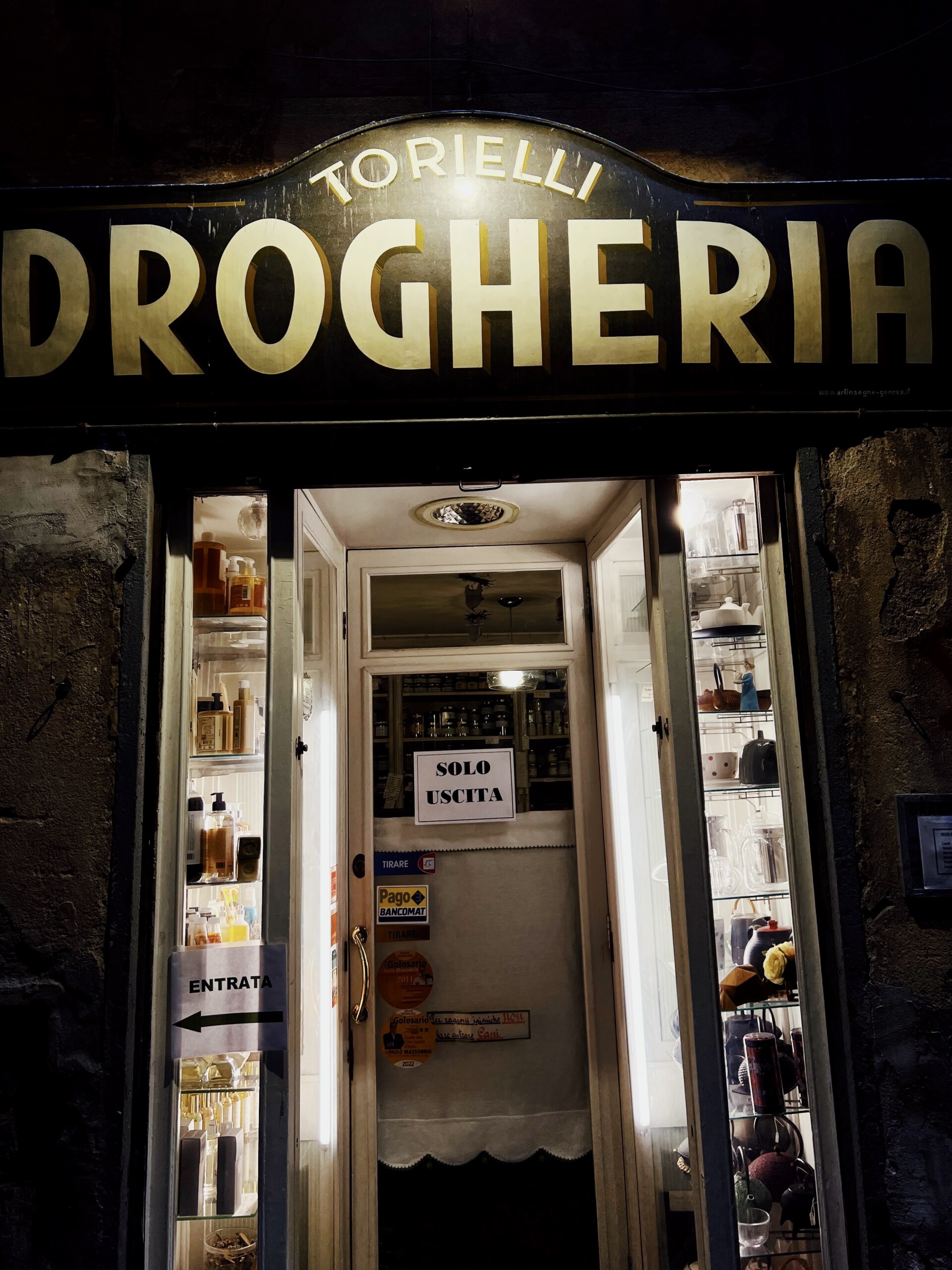
Where to eat in Genova:
(click here for Italy Segreta’s full list of dining recommendations in the superb city)
Antica Sciamadda – For 200 years, Sciamadda has served classic farinata, cooked in a wood-fired oven in large copper trays for a quick but delicious takeout.
Il Marin – This Michelin-starred restaurant on top of the Eataly serves experimental and contemporary Ligurian seafood cuisine at the hands of Genovese chef Marco Visciola. The tasting menu is highly recommended.
Trattoria delle Grazie – This typical trattoria has an authentic atmosphere, fair prices, and traditional flavors on the table. The daily menu, written upon a blackboard, changes, but you can almost always find the Cappon Magro and the “Old Genova” cod–you must try both.
Pasticceria Liquoreria Marescotti – Wood panels, tile floors, and cases full of all the sweet classics. This old-fashioned bakery is a great place for breakfast or a gourmet coffee break, best accompanied by Voltaggio amaretti.
Pasticceria e Gelateria Profumo – Once a “Droghe e Coloniali” depot, now a pastry shop that’s a pillar of Genova, with, a few steps away, an award-winning gelateria. Here the typical Pandolce Antica Genova is available all year round, and, in the shop in Vico Superiore del Ferro 14, you can try superlative ice cream flavors like zabaglione and chinotto.
What to do in Genova:
Acquario di Genova – The most beautiful aquarium in Italy and one of the largest in Europe, right on Genova’s old port. The ticket also gives you access to the Biosphere, a spherical greenhouse designed by Renzo Piano in which you can find tropical trees and birds.
Where to drink in Genova:
Les Rouges Cucina & Cocktails – For top-level cocktails in a vintage atmosphere, head to Les Rouges, the city’s reference cocktail bar. The cocktails are as majestic as the location: the Palazzo Imperiale, which dates back to 1560.
Where to shop in Genova:
Romanengo 1780 – The ancient confectionery “Pietro Romanengo fu Stefano” was born in Genoa in 1780 along the spice road that connected the port to the rest of Piedmont and the rich Turin. Their story tells of imports, discoveries, new exotic ingredients, and their spread in Italy. Not to be missed are the boxes of fondant, confetti, fruit pastes, and candied flowers.
Via Garibaldi 12 – This concept store is hosted by one of the historic palaces of the center, where contemporary craftsmanship, antiques, and design blend under frescoed ceilings. Anything here will be of great quality and great taste.


